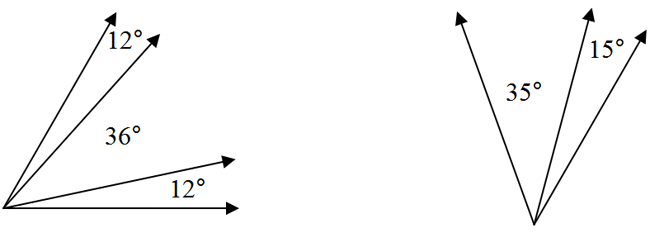
Very simply put, a conjecture is a hypothesis or an educated guess. It is usually based on pattern of examples or non-examples.
Look at the information given below.
These are examples of willow angles.

Write your observations of willow angles in your notes.

Now let's look at some angles that are NOT willow angles.
These are NOT willow angles.

Do your original observations about willow angles still hold true?
Observation 1: It takes 2 adjacent angles to make a willow angle.
This is still true, since the first diagram that is NOT an example of willow angles has 3 angles.
Observation 2: The sum of the angles of willow angles is 60°.
This is still true since the second diagram shows 2 adjacent angles whose sum is 50°.
So, what conjecture could we make about willow angles?

Look at the following examples and non-examples of jory angles.
m∠1 = 45° |
m∠1 = 50° |
m∠2 = 20° |
m∠2 = 50° |
m∠3 = 35° |
These are NOT jory angles. |
These are jory angles. |
|
m∠1 = 40° |
m∠1 = 30° |
m∠2 = 40° |
m∠2 = 25° |
m∠3 = 20° |
m∠3 = 20° |
These are jory angles. |
These are NOT jory angles. |
Using your notes, write a conjecture about jory angles.